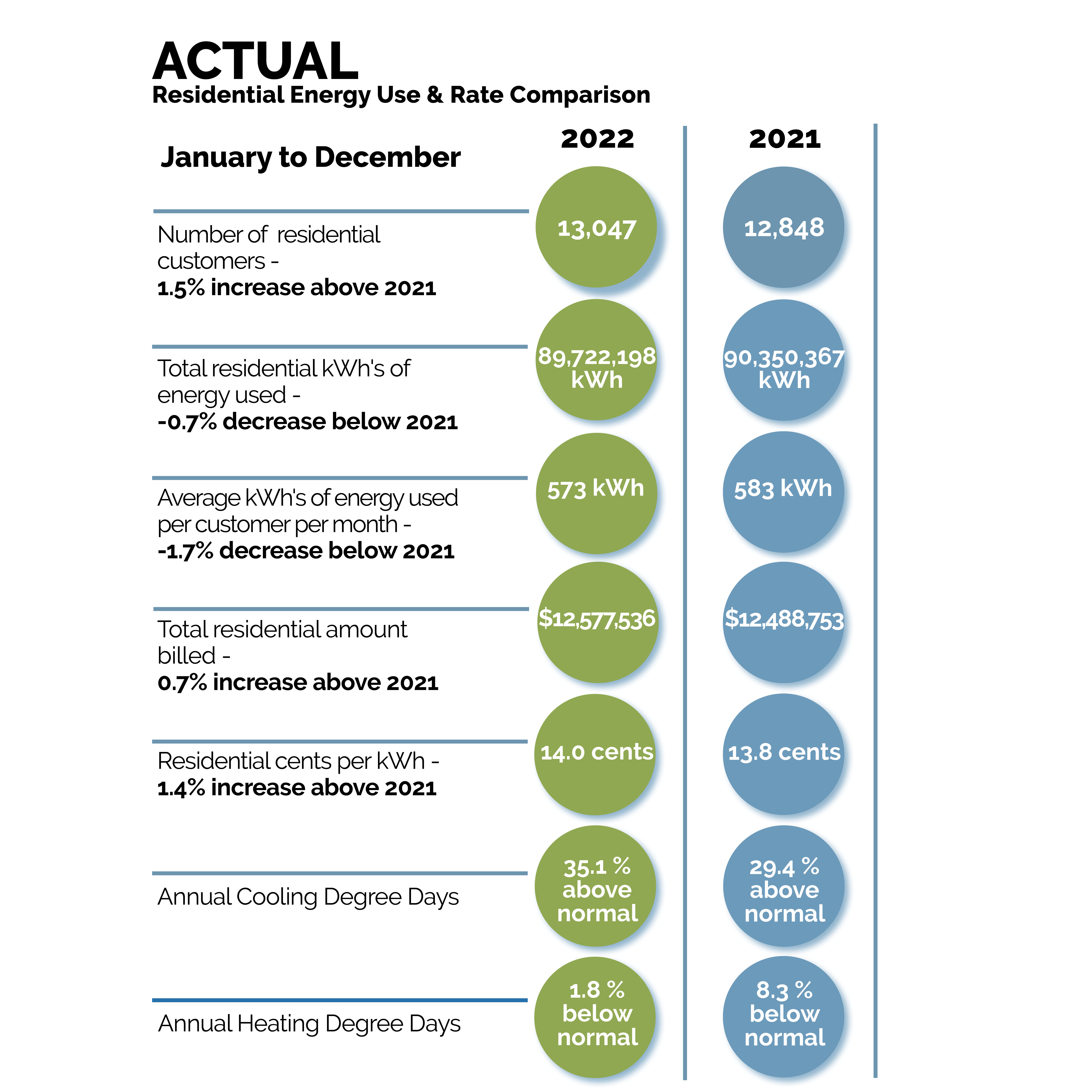High Bill Concerns
If you receive a bill that is significantly higher or lower than you had expected, please contact our customer account representatives by calling (616) 846-6250 so we may evaluate your account. Business hours are Monday-Friday, 8:00 am – 5:00 pm.
Comparing 2022 to 2021
The average amount billed to each residential customer decreased slightly by 0.3% year-over-year due to the average customer decreasing their electricity usage, more than offsetting the increase in charges per kWh.
In 2022, the total number of cooling degree days was 35% above the normal or baseline standard leading to higher than normal electric usage during the hot summer season, however, these were also the circumstances in 2021.
What is a Degree Day?
Degree Day – Cold winter weather or summer heat can increase the cost of your utility bills. You can determine the weather impact by using a unit of measure called a degree day. A higher number of degree days will require more energy for cooling or heating your home or business.
2 Types of Degree Days – Cooling and heating. Each compares the current day’s average temperature to a baseline standard of 65ºF to determine the energy demands of cooling or heating your home or business. Days with an average temperature of 65ºF have no cooling or heating degree days.
Hot days are measured in cooling degree days. On a day with a mean temperature of 80°F, 15 cooling degree days would be recorded
(80-65=15).
Cold days are measured in heating degree days. For a day with a mean temperature of 40°F, 25 heating degree days would be recorded
(65-40=25).
Adding cooling or heating degree days together for a whole month (or year), provides a way to compare a previous month’s (or previous year’s) heating and cooling demands to that of the current month (or current year).
